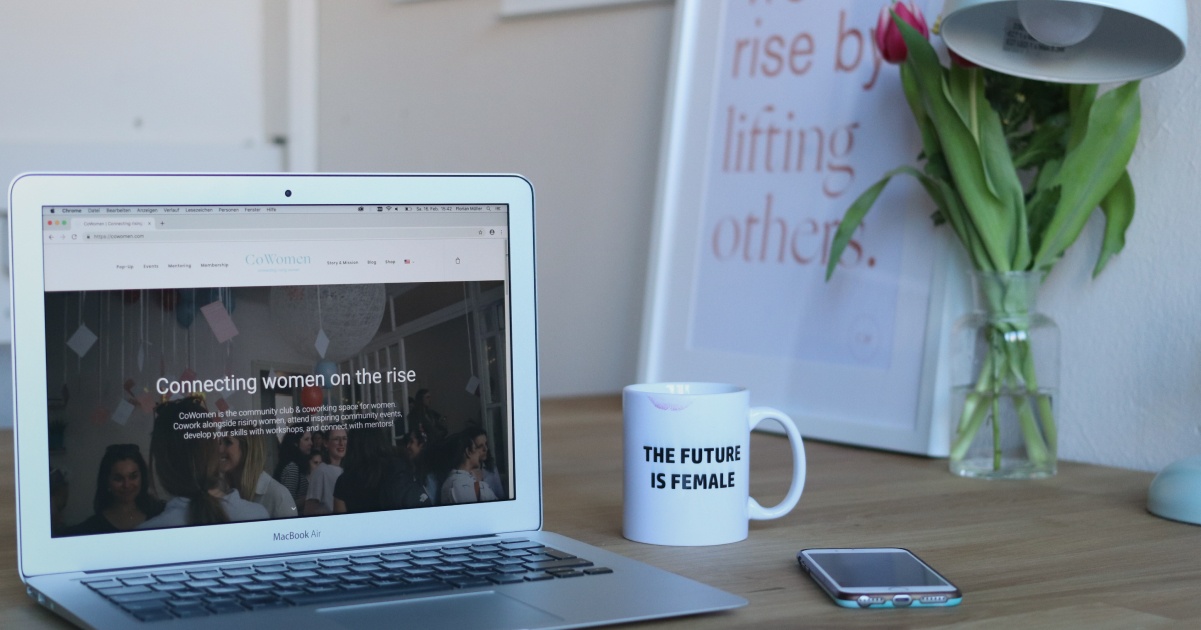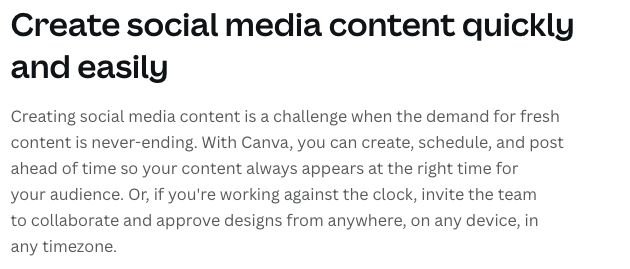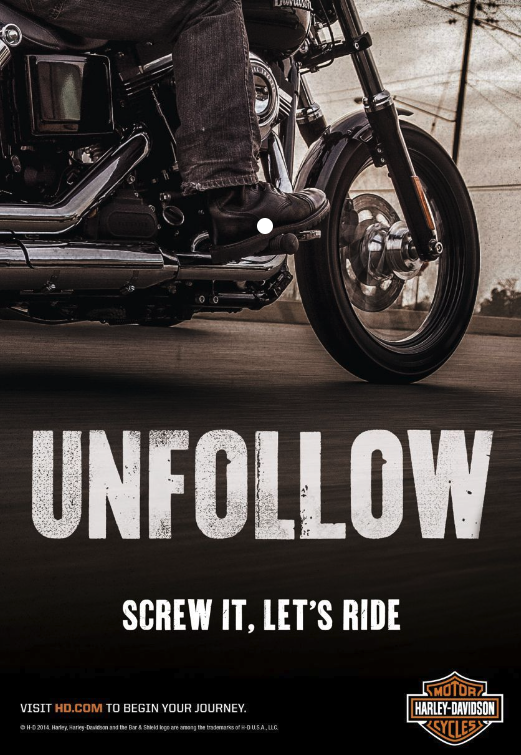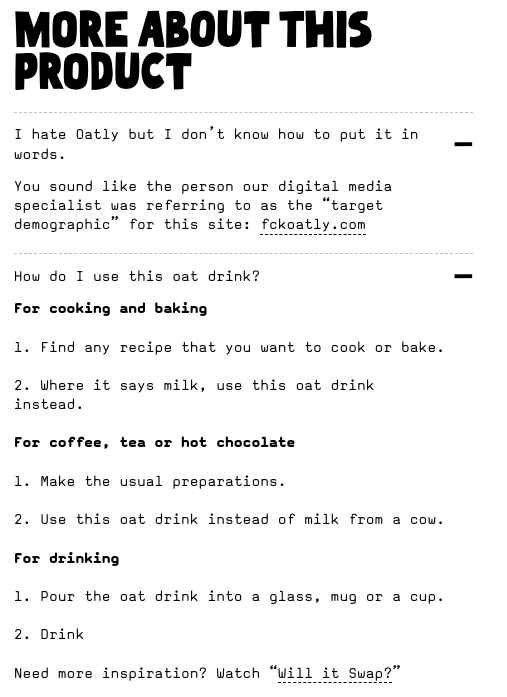
10 Great Examples of Brand Voice
Brand voice is one of the most important tools in business writing. Whether you’re writing a blog post, a product page, or a social media caption, a strong brand voice makes your message clear, consistent, and engaging. For freelance writers, coming to grips with brand voice is a must.
In this post, we’ll unpack what brand voice is, why it matters, and how you can use it to your advantage. We’ll also look at 10 standout examples of brands with unmistakable voices:
- Mailchimp
- Slack
- Duolingo
- Monzo
- Fitbit
- Canva
- Harley-Davidson
- Oatly
- Entrepreneur
- TechCrunch
What Is Brand Voice?
BBrand voice is the distinct personality a brand displays when communicating with its audience, whether that’s through social media posts, website copy, or other marketing materials. It’s how a brand “speaks” to its customers, reflecting its values, mission, and unique perspective.
A brand’s voice is not limited to the words it uses; it also encompasses the tone, style, and attitude projected across different platforms. This consistency is crucial for building trust and familiarity with a target audience.
Businesses can make use of different linguistic tools to cultivate their brand voice, including:
- Tone – Authoritative, conversational, tongue-in-cheek, or empathetic – it all depends on the brand’s values and target audience. For example, LinkedIn maintains a professional and authoritative tone that aligns with its mission of connecting professionals, whereas Innocent Drinks embraces a conversational and playful tone that reflects its fun, approachable brand personality.
- Style – Whether formal or informal, the style a brand adopts will influence how it is perceived. For example, Goldman Sachs maintains a highly formal and structured style that reflects its authority and expertise in global finance, while Glossier embraces a relaxed and conversational style that resonates with its youthful, beauty-focused audience.
- Word choice and vocabulary – The specific words and phrases a brand uses to express itself. For example, Nike opts for powerful and motivational language that inspires action, while Disney employs magical and whimsical terms.
- Subject matter – The topics a brand chooses to discuss reflect its priorities and expertise. For instance, TechCrunch focuses heavily on tech advancements, while Duolingo leans into playful language learning.
Why Is Brand Voice Important?
As a freelance writer, there are two reasons why you should understand brand voice:
- Client expectations: When working with business clients, you will be expected to apply their brand voice to any content you produce for them. You may be provided with brand guidelines to follow, detailing everything from tone and style to preferred vocabulary and phrasing. A deep understanding of brand voice allows you to seamlessly blend your writing with the client’s established persona, ensuring consistency across all content.
- Building your own brand: You will need to establish your own brand voice in order to successfully market your freelance business. This is not just about the words you use but how you present yourself to potential clients. Are you approachable and friendly? Authoritative and detail-focused? Your brand voice becomes your personal signature and sets the tone for how clients perceive your professionalism and expertise.
A well-executed and consistent brand voice is essential for businesses because it:
- Clarifies core values: A strong brand voice communicates the values and mission of the business effectively, making it easier for the audience to understand what the company stands for.
- Resonates with the target audience: When a brand voice is aligned with the values and language of its audience, it strengthens connections and encourages engagement.
- Builds trust and reliability: Consistency in communication builds familiarity, which in turn fosters trust. When a brand voice remains steady across different platforms, it signals reliability to its audience.
- Sets a brand apart: In crowded markets, brand voice serves as a unique identifier, helping a business stand out
- Creates Brand Recall: A distinct voice makes it easier for consumers to remember your brand. People are more likely to recall a brand that consistently speaks to them in a familiar and engaging way.
What Makes a Strong Brand Voice?
A well-crafted brand voice is more than just the words you choose – it’s a representation of your business’s core values and personality. To truly resonate with your audience, your brand voice should demonstrate:
1. Consistency
Your audience should recognize your brand’s voice no matter where they encounter it. Consistency in tone, style, and messaging helps build familiarity and trust over time. It also reinforces your brand’s personality, ensuring that every touchpoint reflects your core values and mission.
Imagine encountering a brand that’s playful and casual on Instagram but strictly formal in its email copy. This inconsistency can create confusion and diminish trust. By maintaining a unified voice across all channels, your brand becomes more reliable and memorable.
2. Authenticity
A brand voice should be a genuine reflection of the company’s true values and mission, not just a marketing facade. Audiences today are highly attuned to inauthentic messaging, and brands that stray from their core values are quickly called out.
To craft an authentic brand voice, it’s important to be transparent and honest in your communications. Avoid exaggerated claims and hollow buzzwords. Instead, speak to the heart of what your brand represents. For example, Patagonia’s brand voice consistently emphasizes environmental sustainability because it’s a core part of its identity – not just a marketing angle.
3. Relatability
For your brand voice to truly resonate, it must connect with your target audience on a personal level. This means understanding their needs, challenges, and aspirations and reflecting that understanding in your messaging.
Relatable brands speak the language of their audience. They use familiar phrases, address common concerns, and share stories that their audience can see themselves in. Whether you’re targeting young professionals, small business owners, or tech-savvy consumers, the right brand voice helps bridge the gap between your business and its audience.
4. Distinctiveness
A strong brand voice should set you apart from competitors, making it clear who you are and what you stand for. In crowded markets, a distinctive voice is often the difference between standing out and blending in.
Think of brands like Ben & Jerry’s, with its playful, socially conscious tone, or Innocent Drinks, known for its friendly and lighthearted messaging. These brands don’t just communicate, they stand out through their personality, tone, and word choice. A distinctive brand voice creates an identity that is instantly recognizable and memorable.
10 Examples of Brand Voice
We’ve established why brand voice is important, but what does a good brand voice actually look like in practice?
Let’s take a look at 10 examples of brands that have perfected their brand voice.
1. Mailchimp
Mailchimp is an email marketing platform aimed at both large and small businesses as well as freelancers.
Its brand voice is informal but informative, explaining complex marketing concepts clearly without being patronizing. It also makes use of some dry humor to build a rapport with the audience.
Take a look at this example from a blog post:

The continued elevator imagery displays Mailchimp’s subtle sense of humor while maintaining a helpful tone.
The overall effect is a brand voice that reads like a friendly coworker offering advice – a great approach for a company that provides email assistance.
2. Slack
Like Mailchimp, Slack is a SaaS (software as a service) company that maintains an informative yet friendly brand voice aimed at professionals and businesses.
However, Slack’s brand voice tends to get right to the point with short, snappy sentences and a neutral tone. Here’s an example from their website homepage:

This straightforward brand voice reflects Slack’s goal to create convenient and efficient workspaces.
3. Duolingo
If you’ve ever used Duolingo or seen its ads, you’ll be familiar with Duo, its green owl mascot. But it’s not just the language-learning app’s logo that leaves a lasting impression.
Duolingo cultivates a brand voice that is quirky and characterful with plenty of humor to be found across both its app and social media copy.
Take a look at this example from a social media post:

This has proved to be a successful brand voice strategy, particularly as it reflects one of Duolingo’s key values – making learning languages fun.
It’s this informal approach to brand voice and education that sets Duolingo apart from its competitors.
4. Monzo
Monzo is an online bank that has embraced a casual tone in its content.
Financial matters are serious business, so it’s no surprise that many banks make use of a formal, complex tone.
But Monzo took a different route, earning its customers’ trust with a friendly and down-to-earth brand voice that engages people on a human level and recognizes their everyday needs.
Monzo also uses an active rather than passive voice, which creates a sense that the bank takes responsibility for its decisions – a position sure to earn respect from customers.
Take a look at this example from the Monzo homepage:

5. Fitbit
Fitbit produces wearable activity trackers that help users monitor their health and fitness levels.
However, Fitbit isn’t a brand that targets fitness enthusiasts exclusively – in fact, Fitbit makes a point of demonstrating that its products are for anyone, no matter their ability or what stage of their fitness journey they are in.
This approach is clear in Fitbit’s brand voice. Comforting, encouraging, and uplifting messages are shared across its customer-facing communications, and it makes use of the plural first person to promote a sense of community.Take a look at this example from one of Fitbit’s blog posts:

6. Canva
The digital design tool, Canva, is a free service that allows anyone to create social media and website graphics.
Canva is a tool that turns complex ideas into something understandable and accessible, and the same is true of their brand voice. It’s friendly and informal but also adventurous and inspiring. It makes use of plenty of energetic words, prompting its audience to take action without overcomplicating things with lots of adjectives or tech jargon. Take a look at this example from their website:

As stated in the brand’s guidelines, “Canva makes it easy for people to achieve their goals. We do this by making design simple. Our words should do the same.”
7. Harley-Davidson
Motorbike manufacturer Harley-Davidson has had a lot of time to perfect its branding since the company’s humble origins in 1903.
The Harley-Davidson brand is synonymous with rebellion, adventure, and biker culture worldwide, and its brand voice capitalizes on these qualities.
It makes use of tough, no-nonsense messaging that is full of confidence. It may seem to go against many marketing guidelines, but in fact, it asserts its expertise as a business that’s been going for more than a century and packs its content with personality.
Its “Screw It, Let’s Ride” marketing campaign is no exception:

8. Oatly
Oatly is a plant-based milk company that has captured attention with its bold and cheeky brand voice. Unlike traditional dairy brands, Oatly uses playful language and self-aware humor across its packaging, website, and marketing campaigns.
Its brand voice is unfiltered and irreverent, often breaking the mold of conventional advertising to speak directly to its audience with witty one-liners and unexpected commentary. Here’s an example from one of their product FAQs:

Oatly’s distinct approach allows it to stand out in the competitive plant-based market by not just selling a product but also challenging norms with its voice. This refreshingly candid communication style has earned it a loyal following that appreciates its straightforwardness and attitude.
9. Entrepreneur
The aptly titled Entrepreneur magazine shares news and advice on business and entrepreneurship, particularly aimed at new and smaller businesses.
As a result, its brand voice is one that is helpful without being overly complex, takes on the second person, and uses an informal tone to address readers directly.
Take a look at this example from one of Entrepreneur’s blog posts:

10. TechCrunch
Last on our list of great brand voice examples is TechCrunch. TechCrunch is a digital magazine that publishes articles about tech startups and the tech industry more generally.
It’s frequented by industry experts and has a reputation as one of the most trustworthy sources of tech news, so it’s no wonder that its voice is informative and full of technical terms that demonstrate its contributors’ expertise.
At the same time, TechCrunch embraces a tone of voice that is witty and occasionally tongue-in-cheek, which creates a sense of familiarity with its core readership.
Take a look at this example from a TechCrunch blog post:

Elevate Your Writing Career
Whether you’re an aspiring freelance writer eager to work with business clients or an experienced writer looking to expand your skill set, we’ve got you covered.
Our two comprehensive courses are designed to help you master the art of both content writing and copywriting:
- Becoming A Freelance Writer – Learn how to research, structure, and craft engaging blog posts and articles that captivate readers and build brand authority.
- Becoming A Copywriter – Discover the secrets of writing compelling, persuasive web copy that drives action and converts browsers into buyers.
And the best part? You can try some lessons for free!





Your email address will not be published.